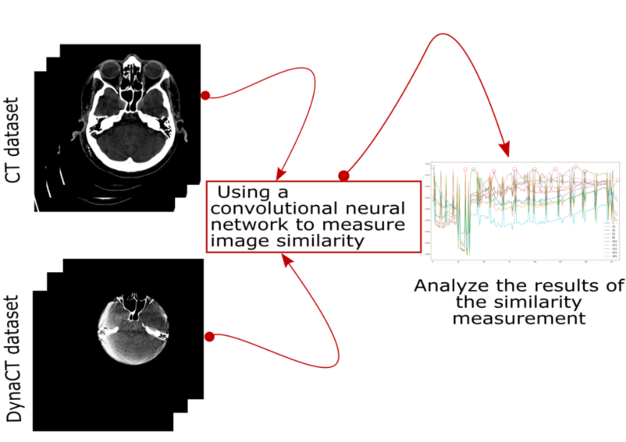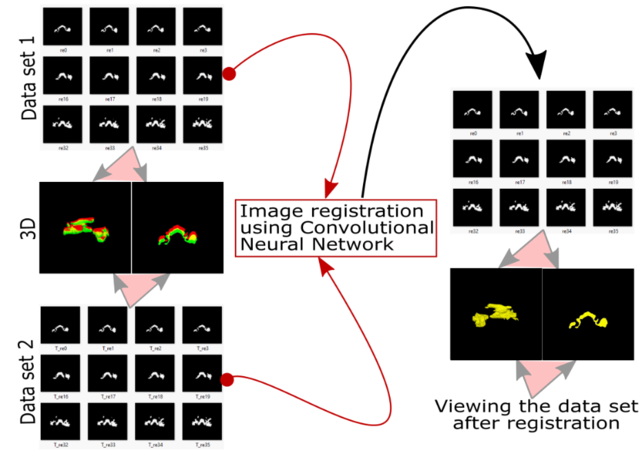AI-based image fusion for deep brain stimulation
The use of artificial intelligence is promising in most aspects of life. In this project, artificial intelligence techniques such as deep learning and convolutional neural networks are used in the field of processing the multimodal medical images for the purpose of determining the Orientation of Directional deep brain stimulation (DBS) Electrodes in the brain.
What is deep brain stimulation (DBS) and where is it used?
Deep Brain Stimulation (DBS) is a neurosurgery procedure that involves placing a medical device referred to as a neurostimulator or sometimes as a brain pacemaker. It consists of an electrode, a lead, a subcutaneous extension, and a pulse generator [1]. The DBS is able to change activities of the brain directly in a controlled manner [2]. The DBS is used as a treatment for many diseases of movement disorders such as Parkinson’s disease, tremors, dystonia, obsessive-compulsive disorder, and epilepsy [3].
The methodology that applying in this project is used to identify the directions of electrodes via the fusion of multimodal medical images such as computed tomography (CT) and angiography (DynaCT) of the brain.
The purpose of fusing two images from different imaging modalities is to obtain an information-rich image that is resulting in additional information in the image compared with each a separated image. Thus, this approach combines the advantages of computed tomography (CT) image, which has a larger scan area, with a higher resolution DynaCT image so that the advantageous features of both imaging modalities can be combined.
The project path is as follows:
- Image analysis
- Image processing
- Image segmentation
- Multimodal image similarity measurement
- Image registration
- Image fusion
I. Medical image similarity measurement based on convolutional neural networks

II. Medical image fusion based on a convolutional neural network
III. Medical image registration using deep learning

The topics related to the project stages (4), (5), and (6) are suitable for theses topics for undergraduate or graduate students.
- Skill expectations for a student applying to one of these projects’ Basic knowledge of Deep Learning or Convolutional Neural Networks in medical imaging and manipulation, and knowledge in MATLAB or Python.
- The data set required to work on one of the projects is sufficiently available and is as follows:
- A stack of two-dimensional computed tomography (CT) images of the brain.
- A stack of two-dimensional angiography (DynaCT) images of the brain.
Please do not hesitate to contact me if you would like more information or ideas or to discuss one of these projects.
References
[1] Astradsson, A., Schweder, P.M., Joint, C., Green, A.L. and Aziz, T.Z., 2011. Twiddler’s syndrome in a patient with a deep brain stimulation device for generalized dystonia. Journal of Clinical Neuroscience, 18(7), pp.970-972.
[2] C. Hammond, R. Ammari, B. Bioulac, and L. Garcia, “Latest view on the mechanism of action of deep brain stimulation,” Movement disorders: official journal of the Movement Disorder Society, vol. 23, no. 15, pp. 2111–2121, 2008.
[3] A. M. Lozano, N. Lipsman, H. Bergman, P. Brown, S. Chabardes, J. W. Chang, K. Matthews, C. C.McIntyre, T. E. Schlaepfer, M. Schulder, et al., “Deep brain stimulation: current challenges and future directions,” Nature Reviews Neurology, vol. 15, no. 3, pp. 148–160, 2019.
